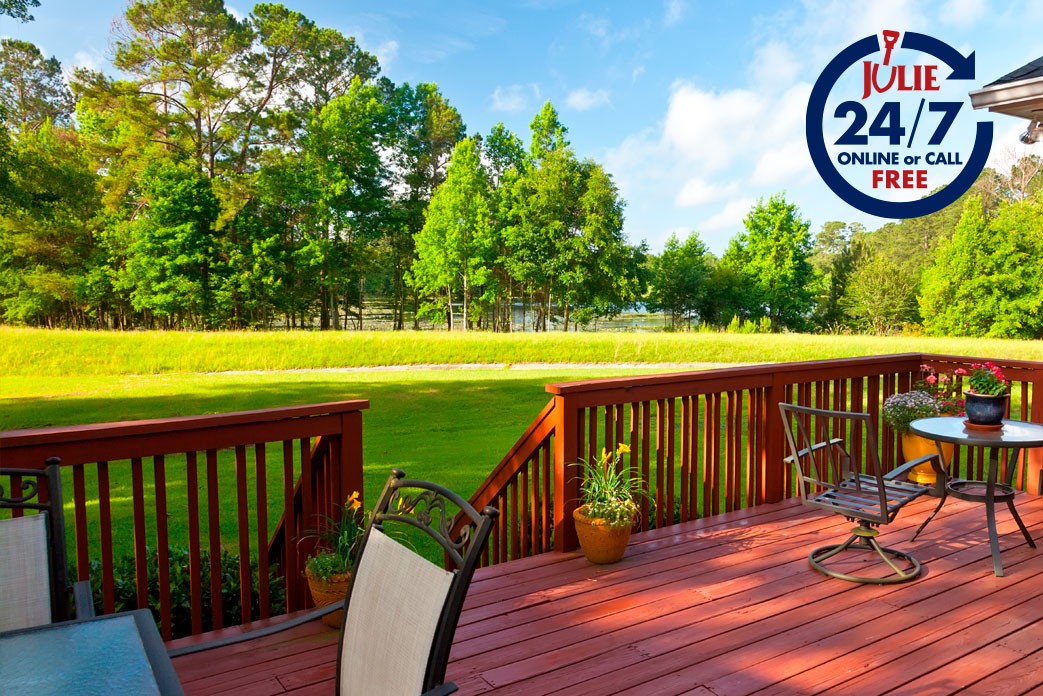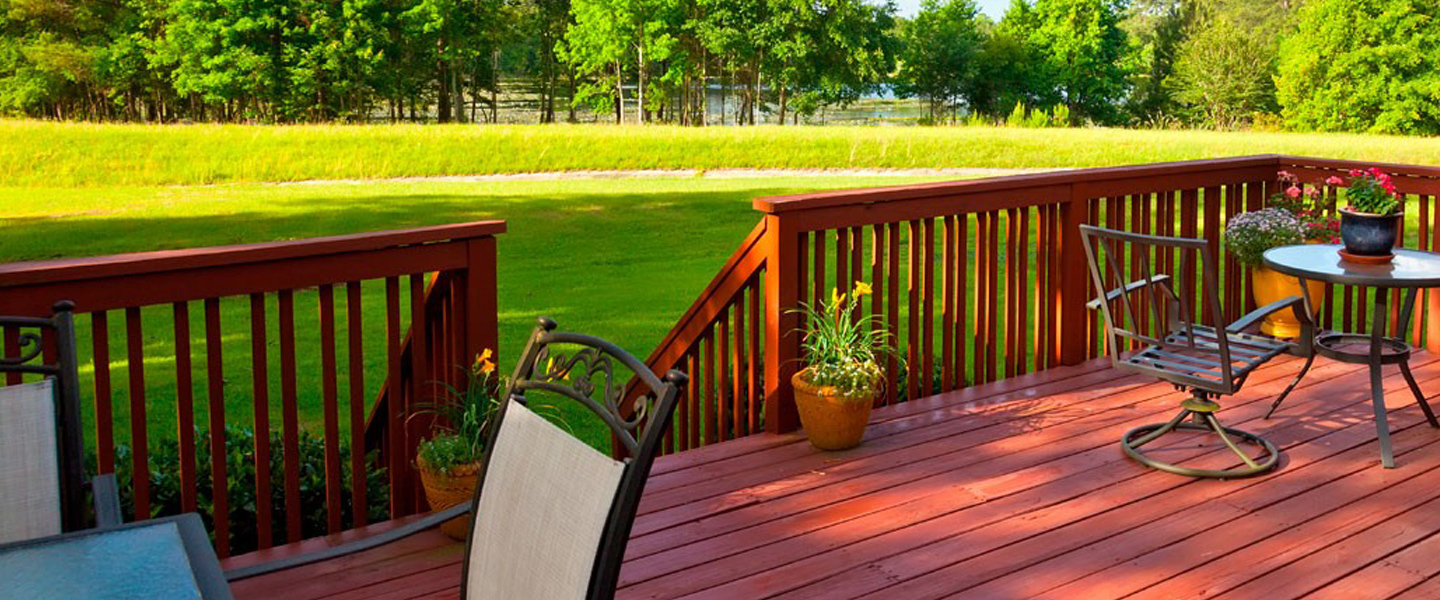Six Mistakes To Avoid When Building A Deck
Out on the deck is a wonderful place to spend time—alone relaxing and enjoying nature or entertaining family and friends. A deck also adds beauty to your home and can even add value to it. So if you want to extend your living space outside or enhance your backyard, consider building a deck.
If it’s your first time planning to build a deck, don’t worry. Become familiar with the most common mistakes below so you can avoid them.

1. Underestimating The Scope Of The Project
While outdoor living spaces are popular, they do require extensive planning and preparation. First, decide if you want to tackle the project yourself or hire a contractor. Building a deck yourself has advantages…especially if you’re handy and skilled with tools. You control the design and timeline, and of course you save money on labor costs. On the other hand, hiring a professional lowers your chance of errors occurring and can actually save you time in the long run. A deck building specialist will understand construction nuances and efficiency, and most likely will be familiar with local building codes as well.
2. Starting From A Sketch
Whether you choose to hire a professional to build a deck or do it on your own, you don’t have to rely on hand drawn plans. Most home improvement stores offer free deck building software that will allow you to digitally construct your deck. Use the tools available to you! Digital deck building software is the easiest solution to produce a plan before you dig a single hole or lift a hammer. When drafting construction plans, it’s important to consider size, shelter and seating. A deck that takes up too much green space could harm resale value, so choosing the right size for the yard is key. Consider creating some form of awning or retractable canopy to provide shelter against the elements. Seating solutions shouldn’t be overlooked, either. Plan out what type you would like and what will function best for the outdoor living space. Built-in seating? Perhaps moveable patio furniture? Get creative! Also, consider if your deck will need stairs and where they should be located for optimum safety and functionality.
3. Forgetting To Apply For A Building Permit
Most villages and cities require a building permit for any addition to a main house. Obtaining one from your local building or planning office should be done before you begin to build a deck. Skipping this step could cost you money, time and other resources. You may be required to submit a framing plan sample that includes the deck location, railing heights, space between railing pickets, location of foundation piers, size of joists, size of posts, size of deck boards and decking material used. A cross section sample plan that provides a “cut-through” view of your proposed deck may also be requested, along with a copy of your property survey. The plan examiner might ask for additional information, so be sure to have all construction specifics on hand. After the permit has been issued and you have contacted JULIE, you can begin building a deck, but be prepared for site visits from your local building inspector. He may show up unannounced to confirm your plans and ensure compliance of local building and safety codes.
4. Planning Poorly
Once you have your design in mind and you’ve applied for a permit—plan ahead. Now’s the time to contact JULIE to have utility lines in your yard marked. You never know what might be buried below…like valuable utility lines. Damaging one can disrupt critical services such as natural gas, electric, water, Internet, fiber optics, and more. Hitting underground utility lines can also cause serious harm to you or your family. Pre-mark the area where you will be building a deck with white paint and/or flags.
Illinois law states that the person actually digging—you if you’re building a deck yourself, or the contractor if you’re hiring a professional—notify JULIE at least two business days before you plan to break ground. The service is FREE and you can submit a locate request 24/7/365 either online or via phone. After receiving confirmation and a dig number from JULIE, you have 14 days to begin your project.
5. Digging Before Utility Lines Are Marked
Before you ever put a shovel in the ground, make sure all utility members have marked their underground lines with colored paint or flags, or marked an All Clear with a painted OK. Never assume the area is safe for digging if you do not see markings. Verify that all member utility companies have marked the location of their underground lines by referencing your confirmation and dig number. JULIE neither owns nor marks any underground utility lines and will never visit your property.
Once you’ve started building a deck, if you can no longer see flags or paint for any reason…weather, fading, construction activity, or vandalism…you can request that markings be refreshed online or over the phone.
6. Cutting Corners On Materials
All deck materials should be chosen according to how well they resist rust, decay and warping. Pressure treated wood is the most popular material used when building a deck; however, there are a multitude of options available including vinyl, PVC, composite, cedar, and exotic hardwoods to name a few. Each option varies in price, durability and overall maintenance. When choosing nails, bolts, screws, and metal fasteners be sure to use galvanized, aluminum or stainless steel since these options combat rust. Select materials that will be the most functional, durable and extend the lifetime of your deck. Another tip, always read and follow manufacturer instructions. For example, using the incorrect nail size with a fastener could cause corrosion leading to equipment malfunction. Thoroughly understanding the pros and cons of each material as well as the level of maintenance required will help you determine what products to use.
Remember, safely building a deck with quality materials is the best way to ensure your deck remains beautiful for years to come.

Safe Digging Tip: Always contact JULIE before you dig to have utility lines on your property located for free by our members. Valuable utility lines may be buried just beneath the surface and hitting one could disrupt critical services, cause serious harm to you or your family, or even result in costly repairs and fines.






 CONTACT US
CONTACT US